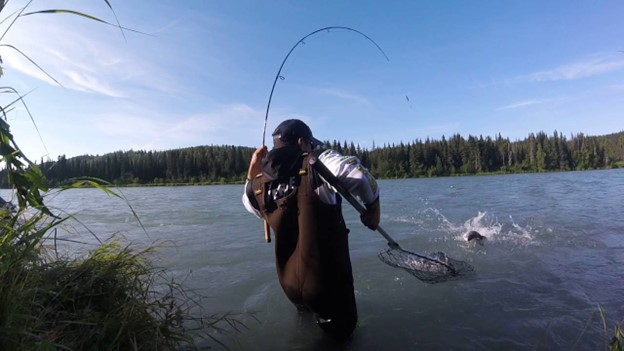Before diving into the fishing techniques, it’s crucial to familiarize ourselves with the species we seek. Sockeye salmon, also known as red salmon, are known for their vibrant red coloration and incredible strength. They are anadromous, meaning they spawn in freshwater but spend most of their lives in the ocean. Every year, sockeye salmon return to the Kenai River in massive numbers during their spawning run, creating an angler’s paradise.
Selecting the appropriate fishing gear is the foundation of a successful angling adventure. A medium-heavy fishing pole, paired with a sturdy reel, will provide the backbone needed to handle these tenacious fish. Look for a reel with a smooth drag system and a high line capacity to withstand the long runs and powerful jumps that sockeye salmon are known for.
Sockeye salmon are known for their selectivity when it comes to the presentation of bait or lures. While there are various techniques to entice these discerning fish, one controversial method that some anglers employ is known as flossing. It’s important to note that the use of flossing is subject to local regulations and guidelines, and its ethical considerations should be carefully weighed.
Flossing involves the use of specialized tackle, such as a heavy weight, multiple hooks, and a long leader with pieces of yarn or other material tied to the hooks. Anglers cast their line upstream and allow it to drift downstream, maintaining tension on the line. The swinging motion created by the multiple hooks and leader can result in accidental hooking if a salmon swims into the path.
While flossing remains a topic of debate within the fishing community, it is essential to respect local fishing regulations and guidelines. Ensure you are familiar with the specific rules of the Kenai River before considering this technique. Responsible fishing practices prioritize the preservation of fish populations and the sustainability of the fishery.
Timing plays a crucial role in sockeye salmon fishing. The Kenai River has specific regulations regarding the timing of fishing seasons and the hours during which fishing is allowed. It’s essential to stay informed about these regulations to ensure a legal and fruitful fishing experience. Additionally, sockeye salmon tend to be more active during the early morning and late evening hours, making these times prime opportunities to reel in a big catch.
The Kenai River is known for its challenging fishing conditions, and success often comes to those who exhibit patience and persistence. Even with the right gear and techniques, it may take time to locate the salmon and entice them to bite. Embrace the serenity of the river, learn from each experience, and remain persistent in your pursuit. Remember, the journey of fishing is just as rewarding as the catch itself.
Fishing for sockeye salmon on the Kenai River is an adventure that rewards the dedicated angler with unforgettable memories and bountiful harvests. By understanding the behavior of sockeye salmon, selecting the right gear, and mastering presentation techniques, you can enhance your chances of a successful fishing trip on the Kenai River. Cast your line, embrace the beauty of nature, and let the Kenai River guide you to victory in your quest for sockeye salmon. Remember, fishing is not just about the catch—it’s about the memories made, the lessons learned, and the profound connection we forge with the natural world. Respect the river, honor the fish, and savor every moment of your fishing adventure on the Kenai River.
This post may contain AI generated content. It has been reviewed by a real person but may not be 100% accurate.
